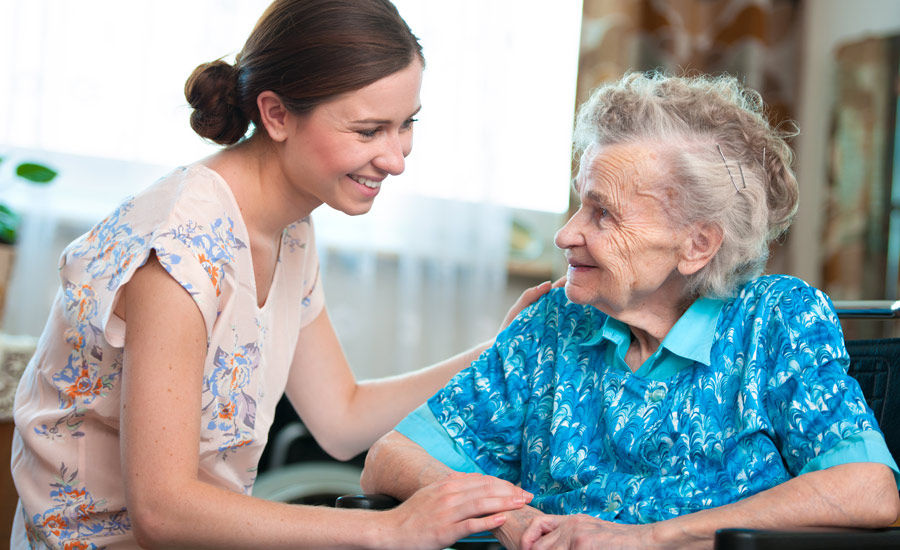The Incredible Impact of Volunteers in Care Homes

Loneliness is a real problem in care homes. Studies show that between 22% and 42% of residents experience severe loneliness – more than twice the rate of older adults who live independently. Long days without visitors or meaningful social interaction can take a serious toll on mental and physical health.
That’s where volunteers come in.
So, how exactly does volunteering make an impact? Let’s take a look at the real difference these everyday heroes make.
How Can Volunteering Impact the Lives of Care Home Residents?
Volunteers in care homes tackle loneliness, improve mental well-being and strengthen the sense of connection for residents who can spend many long hours alone. They also provide companionship, conversation and emotional support, leaving residents feeling valued and engaged.
Regular social interaction has been shown to boost mood, reduce stress and keep the mind active – something that is imperative later in life. Volunteers also keep residents connected with family through phone and video calls.
Companionship That Changes Lives
Residents living in care homes are surrounded by people, yet many still feel alone. Staff have tasks to juggle, family visits aren’t always frequent and without regular conversation or connection, days can feel long and empty. Volunteers help fill that gap by offering company, conversation and social interaction that brings warmth back into daily life.
For some residents, volunteers are the only people they speak to outside of staff. A regular visit gives them something to look forward to — whether it’s things like a friendly chat or enjoying sitting together in comfortable silence. Even the smallest gestures can have the biggest impact.
Ways volunteers bring companionship into care homes:
- One-on-one time
- Encouraging social interaction
- Eating meals together
- Enjoying hobbies
- Looking through old photos
- Bringing in the outside world
- Letter writing
- Watching films or TV together
- Pet therapy visits
- Helping with small personal tasks
- Attending religious or cultural activities
- Reading together
- Music and singing
- Reminiscence activities
- Outdoor time
- Celebrating special occasions
Mental Stimulation and Emotional Well-being
When there’s nothing to break up the day, life in a care home can start to feel dull. Conversations become repetitive, and without anything to focus on, residents can lose motivation and mental sharpness. Care home volunteers bring fresh energy, new topics and activities that give people something to think about and enjoy.
Reading aloud sparks conversation, whether it’s a book, a newspaper or even poetry. Music brings memories to life — singing along to old songs or sharing stories about concerts they once loved. Creative activities like painting or journaling give residents an outlet for expression. At the same time, games and group discussions keep minds engaged and social connections strong.
Staying mentally active helps care homes feel part of something and volunteers work with carers to make sure every day has variety, purpose and a reason to smile.
The Emotional Bond Between Volunteers and Residents
Friendship doesn’t stop just because someone moves into a care home. Residents still crave connection and volunteers often become a familiar, trusted presence. Having someone who takes the time to listen, remembers the little details and regularly shows up makes a huge difference to a lonely resident’s life.
Unfortunately, some residents don’t have regular visitors, so volunteering can provide that sense of familiarity and trust that is life-changing. A conversation that picks up where it left off, a joke that becomes an inside joke or just knowing someone is there for them creates a real sense of belonging. These simple, consistent interactions make care homes feel less like facilities and more like communities.
And it’s not just residents who benefit. Volunteers often form friendships they never expected, gaining just as much as they give. These connections are about mutual respect, warmth and human connection.
Keeping Residents Connected to Family and the Outside World
Sometimes, care home residents feel like they are losing touch with the outside world. Regular routines replace old habits and keeping up with family, friends and the local community isn’t always easy. Volunteers help bridge that gap so that residents stay connected to the people and places that matter to them.
Some volunteers assist with emails or messaging apps, while others encourage families to visit more often by helping organise visits or special events. Even bringing in news from the local area, like chatting about what’s happening in town or discussing familiar places, helps residents feel less distant from life outside.
Volunteers help keep important bonds strong, ensuring residents don’t feel forgotten.
The Difference a Few Hours Can Make
Loneliness is a reality for many care home residents, but volunteers help change that. As mentioned, they bring conversation, companionship and a sense of connection that makes daily life feel richer. A simple visit or a shared activity can lift someone’s mood and remind them they’re not forgotten. Even a few hours of volunteering can make a lasting difference to someone who just needs a little more human connection in their day.
Ready to explore...
